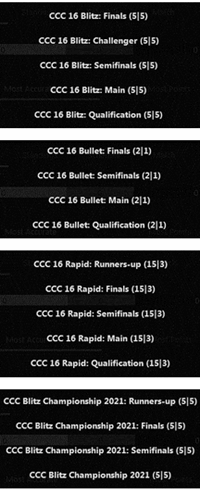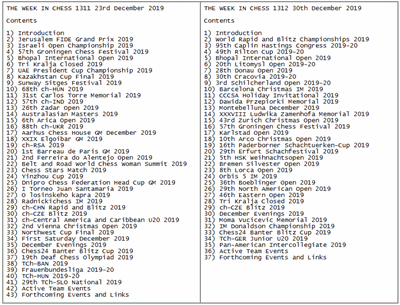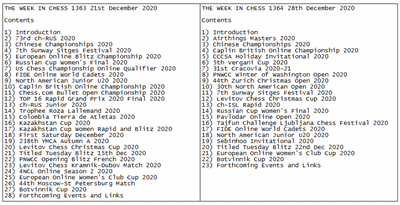The year 2007 is turning out to be one of the best years ever for chess non-fiction. After Michael Weinreb's The Kings of New York and Howard Goldowsky's Engaging Pieces, the chess world can look forward to Paul Hoffman's King's Gambit, subtitled 'A Son, a Father, and the World's Most Dangerous Game'. An excerpt from the book is available at...
Paul Hoffman - the pH Test
http://www.thephtest.com/
...where 'pH' are the initials of the author of the 'bestselling biography' of mathematician Paul Erdös, The Man Who Knew Only Numbers. After filing the link to Hoffman's excerpt in my bookmarks for a few weeks, I finally found the time to read it carefully. Instead of being awed by a top class writer treating my favorite subject, I came away scratching my head. The excerpt, which builds on the story of a 1970s simul where Hoffman played Danish GM Bent Larsen, contains several inaccuracies.
The most glaring error is the description of how a simul works. If you've never played a simul, you might not be familiar with the mechanics: you wait until the chess master arrives at your board, you make your move, the master makes his (or hers), and then he moves on to the next board. This lets the master see your current move and gives you time to think about your next move before the master returns. A few weeks ago I assembled a list of links to YouTube videos showing top chess players -- Fischer, Kasparov, two of the three Polgar sisters, and others -- in action at simultaneous exhibitions: Chess Simuls on About.com. You can see the mechanics for yourself.
The sequence described by Hoffman doesn't work that way. Larsen arrives at Hoffman's board and makes his move; after Larsen leaves, Hoffman makes his move while the grandmaster is elsewhere: 'I reached out and made the move I intended and waited for Larsen to return.' How do we explain this? A one time violation of the ground rules of a simul? The faded memory of an adolescent moment that took place 30 years ago? Unfortunately, there are other discrepancies.
The surname of Romanian GM Florin Gheorghiu is misspelled five times ('Gheorgiu'). Perhaps this is taken from the tournament book of the 1970 Siegen Olympiad, where Gheorghiu's name appears twice in a quoted passage, spelled incorrectly both times. At least Hoffman gives Gheorghiu's name. IM Sture Nyman is only described as a 'little-known Swedish master'. How do I know it's Nyman? Hoffman wrote:
A month before the exhibition, I decided to study every published game of Larsen's I could find in which he played Black. [...] Larsen and I duplicated move for move a From's Gambit that he had played against a little-known Swedish master. The Swede had played passively and was ferociously vanquished. His trouble, I believed, began with his ninth move, which put him on the defensive, from which he never recovered. I had come up with an improvement that I planned to unveil if Larsen made the same eighth move.
The simul was played in the 1970s, two decades before the availability of large chess databases. It's easy to determine now that Larsen played the Black side of From's Gambit (1.f4 e5) in one recorded game, a correspondence game from 1966. As it happens, the game is no.35 in my copy of Larsen's 50 Udvalgte Partier 1948-69. The book was translated into English as Larsen's Selected Games of Chess, 1948-69, and was most likely the primary source of Hoffman's studies. In his notes, Larsen questions White's ninth move ('?') and suggests an improvement. Was this the same improvement that Hoffman played?
I reached out and made the move I intended and waited for Larsen to return. He arrived and, just as I hoped, he paused. He studied the position for what seemed like ages and then looked up at me, smiling. "That's a better move," Larsen said, "but no matter." The smile disappeared and his voice became grim. "I shall crush you anyway, like I crushed him."
There are two points in this passage that bother me. The first point is that anyone who knew enough about chess to collect and study Larsen's games would be naive enough to expect the Danish GM to forget his published analysis, particularly the opening of a correspondence game.
The second point is more troubling, and concerns 'Larsen's aggressive outburst', which is Hoffman's phrase. When I lived in Copenhagen, I played against Larsen three times in simultaneous exhibitions. He was always generous with the time he gave to local clubs, and preceded each of his exhibitions with a short talk about his recent chess activities. The Larsen described by Hoffman is not the Larsen that I remember. The story in King's Gambit presents the grandmaster in an unflattering and, in my opinion, an unfair light.
On the same page as the excerpt Hoffman has 'A Quick Q & A with Myself'. There he describes his father as 'a pathological liar and con man -- a fact that I did not allow myself to realize until late in college.' I trust that the rest of Hoffman's new book is more accurate and better balanced than the excerpt he has chosen for his site. If not, professional chess historians, who know far more about the details of chess history than I do, are going to have a field day with it. They might even give us nasty reminders about the distance that apples fall from trees.
***
Note: Chess Blog Carnival – 1
 Last month, in
TCEC S22 DivP, CCC17 Rapid : Both Underway
(March 2022), I made a mistake. Although I was trying to prepare an overview of the first CCC season that took place in 2021 under new management, I overlooked one of the main events.
Last month, in
TCEC S22 DivP, CCC17 Rapid : Both Underway
(March 2022), I made a mistake. Although I was trying to prepare an overview of the first CCC season that took place in 2021 under new management, I overlooked one of the main events.





